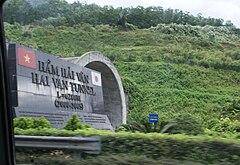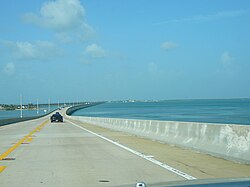HOME PAGE
Deo Hai Van is known to the locals as "ocean cloud pass." Its name refers to the mists that rise from the sea, reducing visibility.
 Connecting Hue Province and Danang City, the twisting road on the pass has long been a challenge for drivers. Since the completion of Hai Van Tunnel, traffic flow and safety have improved.
Connecting Hue Province and Danang City, the twisting road on the pass has long been a challenge for drivers. Since the completion of Hai Van Tunnel, traffic flow and safety have improved.
Before the days of the Hai Van Tunnel, one can imagine how much drivers resist from looking away from this narrow road, curvy, laneless and no guard rails whatsoever.
The Hai Van Pass crosses over a spur of the Truong Son (Annamite) Range that emerges from the west and juts into the east Sea, forming the Hai Van Peninsula and the adjoining Son Tra Island. The pass, which once formed the boundary between the kingdoms of Dai Viet and Champa, also forms a boundary between the climates of northern and southern Vietnam, sheltering the city of Da Nang from the northwest winds. During the winter months (November–March), for instance, weather on the north side of the pass might be wet and cold, while the south side might be warm and dry.
The Deo Hai Van Pass dated back to the 1st century when the Chinese general Ma Yuan (Mã Viện), after pacifying northern Vietnam, advanced south and established the southern border of the Han (Hán) empire by setting up columns of bronze.
The pass has since become a strategic importance in the history of Vietnam, and for a long time represented as a major barrier to any land army that attempted to move between the northern and central regions of the country.
Rote planning and design work for the Hai Van Tunnel started in January 1998 by a joint venture between Nippon Koei Company Ltd., Japan and Louis Berger International Inc., USA with the Vietnamese Transport Engineering Design Inc. (TEDI) providing consultation on the project.
Rote planning and design work for the Hai Van Tunnel started in January 1998 by a joint venture between Nippon Koei Company Ltd., Japan and Louis Berger International Inc., USA with the Vietnamese Transport Engineering Design Inc. (TEDI) providing consultation on the project.
The tunnel now saves people from the chilling fears its past used to pose upon them.
Updated: 07/14/2014
Updated: 07/14/2014
























 The Millau Viaduct is part of the freeway from Paris to Montpellier, and is located in southern France.
The Millau Viaduct is part of the freeway from Paris to Montpellier, and is located in southern France.




